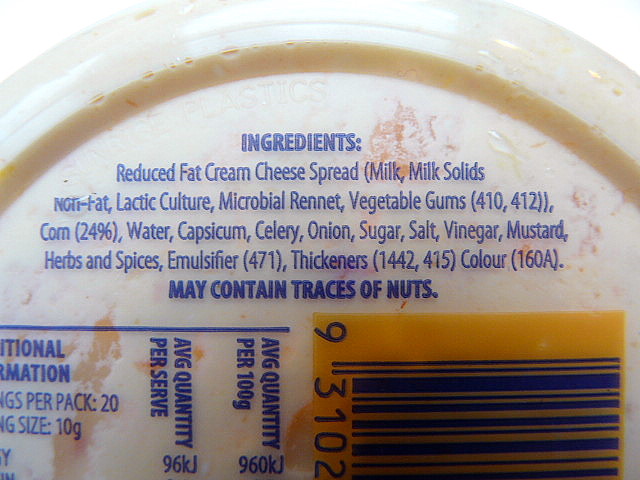The Role of Emulsifier In Food in Maintaining Freshness
Discover the Benefits of Using an Emulsifier in Food for Enhanced Culinary Experiences
Emulsifiers are frequently neglected yet vital elements in culinary practices. They help with the blending of inconsonant active ingredients, boosting both taste and structure. By making sure stability, emulsifiers prevent the unsightly splitting up of combinations. Their adaptability covers various applications, from sauces to dressings. Understanding their feature can bring about considerable enhancements in food quality and discussion. What certain benefits do emulsifiers offer that can change daily dishes right into amazing culinary experiences?
Understanding Emulsifiers: What They Are and Just how They Work
Emulsifiers play an important duty in the food market, serving as representatives that assist in the mixing of water and oil, 2 substances that typically do not mix. These compounds have both hydrophilic (water-attracting) and hydrophobic (oil-attracting) properties, permitting them to stabilize combinations by minimizing the surface stress between both phases. Typical emulsifiers include lecithin, mono- and diglycerides, and specific proteins.
When included to food, emulsifiers produce a secure emulsion, stopping separation and making sure a consistent structure - Emulsifier In Food. They are essential in numerous applications, varying from salad dressings and mayonnaise to ice lotion and sauces. By keeping the stability of combinations, emulsifiers not only improve the aesthetic appeal of food yet also enhance mouthfeel and uniformity. Their ability to support solutions makes them essential in modern-day food solution, contributing considerably to the quality and service life of different products
The Function of Emulsifiers in Taste Improvement
While often ignored, emulsifiers substantially add to flavor enhancement in foodstuff. They play an essential role in enhancing the total preference experience by guaranteeing that flavor compounds are uniformly dispersed throughout a meal. By maintaining solutions, such as dressings or sauces, emulsifiers avoid the separation of oil and water, enabling flavors to fuse with each other better. This uniform distribution not only increases the preference but also assures that each bite is regularly tasty.
Emulsifiers can enhance the perception of certain flavors, making them more pronounced on the taste. They might connect with details active ingredients, aiding to launch unpredictable taste substances that contribute to a meal's aromatic profile. Consequently, making use of emulsifiers can substantially boost the cooking experience, changing basic dishes right into complicated and wonderful flavor journeys. Their subtle yet impactful role in taste improvement must not be taken too lightly in the art of food preparation.
Emulsifiers and Appearance: Producing Creamy and Velvety Cuisines
The influence of emulsifiers prolongs beyond flavor improvement to the domain of texture, where they are crucial in developing silky and creamy recipes. By helping with the uniform circulation of fats and water, emulsifiers enable the formation of secure solutions, resulting in an elegant mouthfeel. This is particularly evident in products like mayo, sauces, and dressings, where a smooth, luscious consistency is desired.
Emulsifiers such as lecithin and mono- and diglycerides function to minimize surface stress between components, allowing for a harmonious blend that enhances the sensory experience. The velvety texture accomplished via emulsification can elevate dishes, making them a lot more satisfying and enticing. Additionally, the capability to produce a creamy appearance allows chefs to incorporate different active ingredients without compromising consistency, resulting in ingenious cooking productions. Basically, emulsifiers play a vital duty in changing ordinary dishes into remarkable culinary experiences with structure improvement.
Stability Matters: How Emulsifiers Prevent Separation
A vital facet of cooking emulsifiers is their capacity to avoid separation, guaranteeing that items keep their designated structure and appearance in time. Emulsifiers operate by maintaining combinations of oil and water, which normally often tend to divide as a result of distinctions in thickness and polarity. By lowering surface tension at the oil-water interface, emulsifiers facilitate the formation of stable emulsions, enabling for a consistent circulation of active ingredients.

Typical Emulsifiers in Food Preparation and Their Applications
Understanding the different emulsifiers generally utilized in food preparation discloses their significant functions in boosting food texture and stability. Lecithin, originated from egg yolks or soybeans, is widely employed in mayo and salad dressings, providing a velvety uniformity. Mustard, additionally an emulsifier, aids in maintaining vinaigrettes while imparting taste.


Another popular find more info emulsifier is xanthan periodontal, often utilized in gluten-free baking and sauces for its thickening residential properties. Guar periodontal offers a comparable objective, improving the structure of ice creams and milk items.
Mono- and diglycerides, usually located in refined foods, aid boost service Clicking Here life and preserve texture. Finally, casein, a milk healthy protein, is made use of in cheese-making and luscious sauces, adding to a smooth mouthfeel. Each of these emulsifiers plays a crucial duty in cooking applications, protecting against and ensuring preferable textures separation in varied foodstuff.
Regularly Asked Concerns
Are Emulsifiers Safe for Individuals With Food Allergies?
Emulsifiers can be secure for people with food allergies, relying on the details emulsifier utilized. It is necessary to determine the source of the emulsifier, as some might trigger sensitive reactions in delicate individuals.
Exactly How Do Emulsifiers Influence the Nutritional Material of Food?
Emulsifiers can affect the nutritional content of food by boosting nutrition absorption and boosting appearance. However, their visibility may additionally weaken certain nutrients, depending upon the food matrix, possibly altering general dietary worth.
Can Emulsifiers Be Utilized in Vegan Food Preparation?
Emulsifiers can be effectively utilized in vegan food preparation, giving texture and stability to meals. Plant-based emulsifiers like lecithin, acquired from soy or sunflower, help blend components, improving the general top quality of vegan cooking creations.
What Are the Environmental Impacts of Emulsifier Production?
The environmental effects of emulsifier production commonly consist of logging, water air pollution, and high power consumption. Additionally, some sources of emulsifiers can add to biodiversity loss, raising concerns about sustainability in food manufacturing practices.
How Do Emulsifiers Compare to Natural Thickeners in Cooking?
Emulsifiers offer smoother textures and improved stability compared to all-natural thickeners, which can impart distinct tastes - Emulsifier In Food. While emulsifiers boost mouthfeel and look, all-natural thickeners supply more health benefits and can add to the recipe's taste account
When added to food products, emulsifiers create a stable solution, protecting against splitting up and making sure an uniform texture. While often overlooked, emulsifiers greatly add to flavor enhancement in food items. Recognizing the different emulsifiers typically used in food preparation exposes their significant duties in improving food structure and stability. Emulsifiers can be secure for individuals with food allergic reactions, depending on the details emulsifier utilized. Emulsifiers can influence the dietary material of food by boosting nutrition absorption and improving appearance.